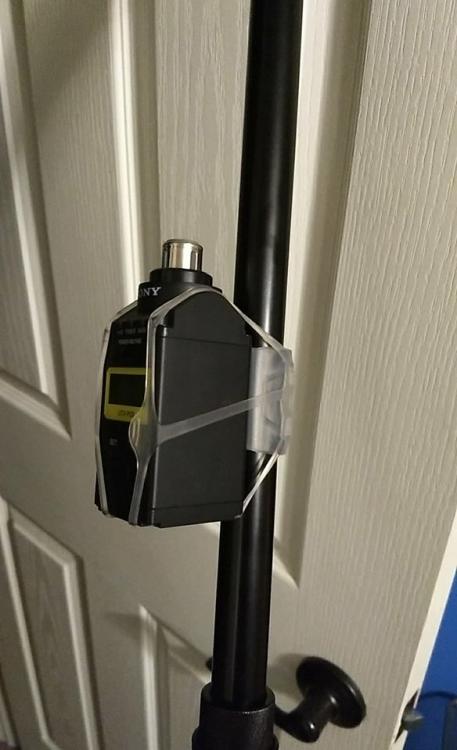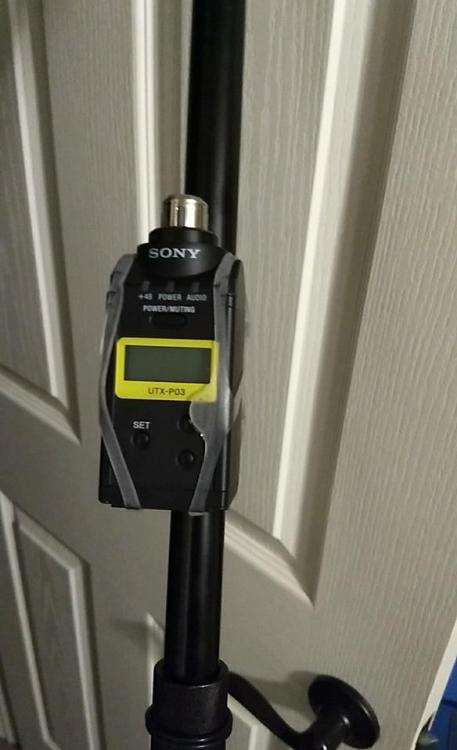
SBretzke
Members-
Posts
11 -
Joined
-
Last visited
Profile Information
-
Location
Texas
-
About
Production & Post-Production Sound
-
Interested in Sound for Picture
Yes
Recent Profile Visitors
The recent visitors block is disabled and is not being shown to other users.
-
Blackbird Carts is awesome! https://www.blackbirdcarts.com/
-
It's worth noting that Zaxcom has also released a new receiver called the MRX414 that can now receive 4 discrete mono transmitters, as well as still receiving 2 discrete stereo transmitters if you want. I'm sure the standalone QRX400 is on its way too!
-
Which Location Sound Mixers Have the Best Websites?
SBretzke replied to Dan Brockett's topic in General Discussion
Two of my favorites, very different approaches: https://henrirapp.com/ http://contactscott.com/ -
Well there's the answer. Thanks for the input, Matthias. In which case I would pair the Cedar (if going to use DSP solutions at all) with the two analogue mics I mentioned, the Sanken boom and Sennhieser lavs.
-
I'm curious about what a combo of the SuperCMIT + Cedar DNS2 would accomplish. Maybe it would sound like shit, maybe it would work wonders. On the analogue side, you can't do better than a Sanken CS3e boom for isolation, and I've found the Sennheiser MKE2 lavs to be the best at isolation on the talent. Sound/tonal quality is definitely lacking compared to the DPAs or Sankens, but if you really just need to hear the talent and reduce background noise then try the Sennheisers. Regardless of what tools you use, s:n ratio is crucial for boom and lavs. Tell your producer flat out that there should be no shooting wide/tights ever, and that you need extra cooperation with wardrobe to get perfect lav placement-- assuming he doesn't want to ADR the movie. Good luck!
-
K-Tek Squid Universal Mount & and other transmitter solutions
SBretzke replied to Adam White's topic in Equipment
I bought a K-Tek Squid last month and it's wonderful. Very classy and sturdy. There's a small learning curve for being able to quickly and efficiently attach the transmitter, but you get used to it pretty fast. I use it with my Sony UTX-P03 plug on, which is of comparable size to other plug-on transmitters. Definitely worth a buy! -
I was a lucky duck who was able to pick up this mic for about 800 USD, and only because I responded within a minute of it going up for sale. It's about a decade old and looks like it, but hey, we don't buy mics for how they look now do we?
-
Shout out to the astounding (and huge) production sound team who achieved an amazing feat on Justin Timberlake's new music video for "Say Something"! This marvel was filmed in one take, and on the first try, featuring a live performance with a 60 person choir and about 20 other various musicians (among a 200 person crew), facilitated by top-notch production sound. I'm curious if anyone on the 6+ person sound team is on this forum and would be interested in talking about all the coordination required to pull this off, especially the wrangling of all the wireless gear, which apparently required a dedicated 3 person RF team to manage. Great job to everyone who contributed to this work of art! It even got me to like JT's music a little bit (:
-
After trolling JWSound and other sound-focused corners of the web (along with *gasp* real-life conversations), it seems to me nearly everyone agrees that production sound- and even sound overall- is gradually being respected less and less by those above and below the line on many productions. Many long-time production sound mixers on this forum hearken back to the "good ol' days" where the production sound team was actually given deference instead of snide remarks or just ignored altogether, a tragic degradation of the profession. Of course, every production is different and some are far worse than others, but there does seem to be a trend in most areas of the film and video industry, regardless of budget. What are some of the causes of this? Is there any hope for "reclaiming our honor", so to speak?One thing that confuses me is how the most prolific, respected, and successful directors are very open about treating sound (both production and post) the way it's supposed to be treated- as inextricable from and equally important as picture- yet this mindset has not trickled down to the rest of the industry. Surely aspiring (aka the bottom 99%) filmmakers would want to emulate what the best-of-the-best are doing in ALL aspects of movie making, not just the flashy camera stuff? Those of you who have been in the industry for a long time, what has changed? Is it simply the faulty "anything can be fixed in post" mindset, or is there more to it?Lastly, what can people like myself, people more recently entering the sound field, do to keep the perception of sound from degrading further? How can we improve things for future generations?Looking forward to hearing all your thoughts! -Siegen
-
So why were you even there? Just hand them a Rode video mic they can attach to their camera and say good riddance. Thank goodness I've never run into an AD that flippant.
-
As convolution reverbs become increasingly common and affordable, it seems this is where the future of post-sound mixing lies. With that in mind, should production sound mixers be integrating IR recording into their workflow? How many prod. sound mixers out there have already integrated impulse response recording into their workflow on-location, or have ever done it at all? How many post-prod. sound mixers out there wish there were more PSM's doing this? Do you use convolution reverb? Would you use it more if more recordings were provided? From what I've read around the web, it seems like convolution reverb is mostly just being used as a "fix" to match ADR with production dialogue, and not more generally as a standard mixing step (but maybe it's being used more than I realize?). In which case, if the PPSM's don't use it, no reason for the PSM's to bother. To me, it seems that the practice of recording the IR response of a space should be as standard and ubiquitous as recording room tone. Of course, post won't necessarily need to use it, but sometimes the same can be said for half the production dialogue anyway. Assuming you've got a workflow you're comfortable with, recording the IR should take about as long as recording room tone, so you're not taking up an exorbitant amount of time, <2.5 minutes for both IR and room tone (unless, of course, the AD/director/producer isn't even willing to allocate time for room tone, which is a sad reality of many productions). Sure, there are IR libraries, but I would compare a library IR to a library room tone loop: you can generally get away with it, but that doesn't mean it couldn't be much better with an authentic recording from the location. Should PSMs treat IR recording the same way they treat room tone? Maybe my logic is naïve, wrong, or extrapolating too far. Let me know what you think!


